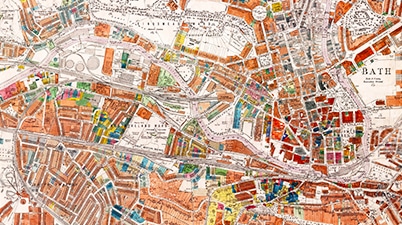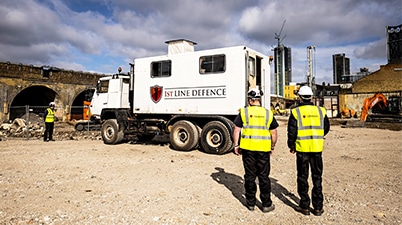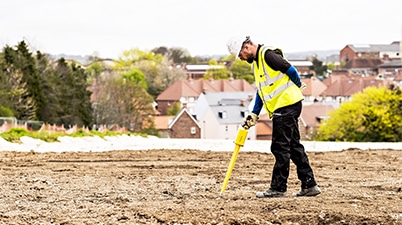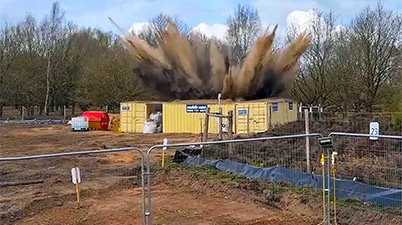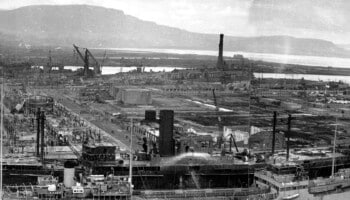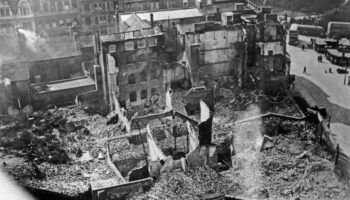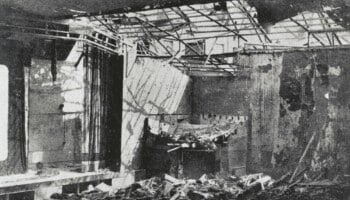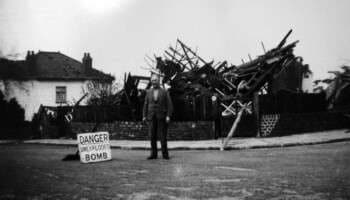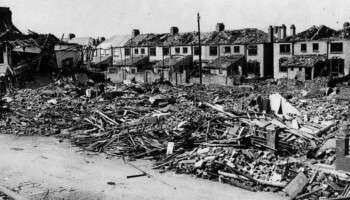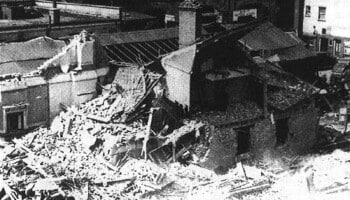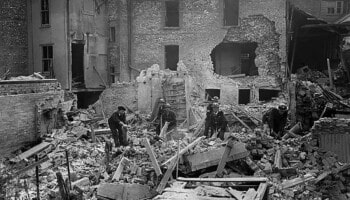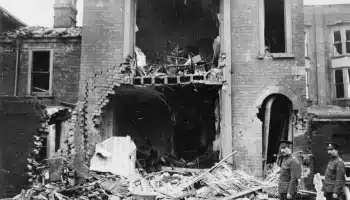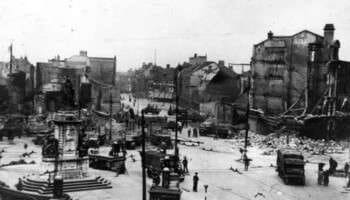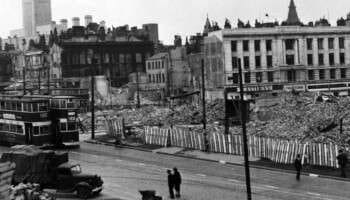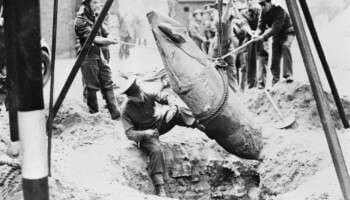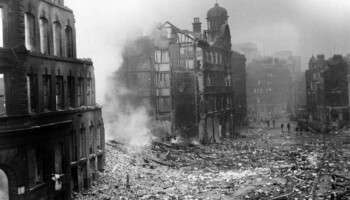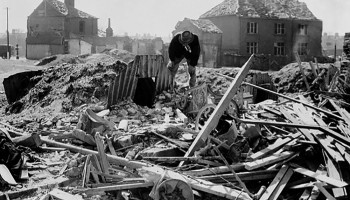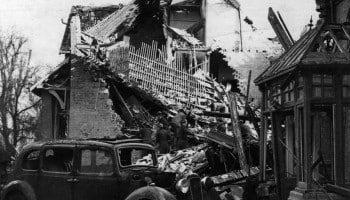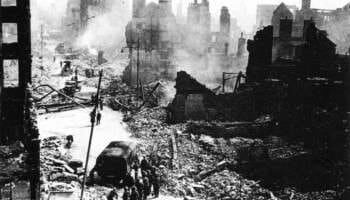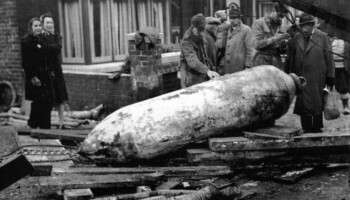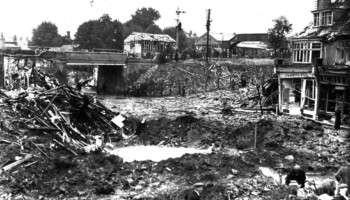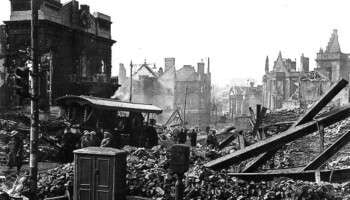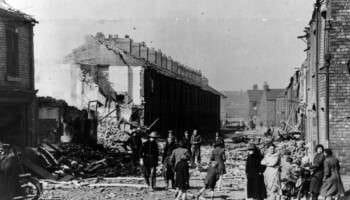Home » Resources » UXO City Guides »
UXO City Guide
Home Office Bombing Statistics for Canterbury
Record of German Ordnance dropped on the County Borough of Canterbury
High Explosive Bombs (All types)
455
Parachute Mines
0
Oil Bombs
18
Phosphorus Bombs
10
Fire Pots
48
Pilotless Aircraft (V-1)
1
Long-range Rocket Bombs (V-2)
0
Weapons Total
512
Area Acreage
4,690
Number of items per 1,000 acres
109.2
Why was Canterbury targeted and bombed in WWII?
In several cases, Canterbury was a target of opportunity for German bombers flying to other cities like London; bombers unable to hit their primary target would often drop their ordnance on their return journey, and Canterbury’s location in the south-east of England meant it was in close proximity to the routes that bombers would take on raids to London. Later in the war, Canterbury was one of many places to suffer ‘tip and run’ raids where, due to declining resources, small groups of German planes aimed to cause disruption rather than wide-scale destruction.
However, Canterbury was one of the main targets in the ‘Baedeker Blitz’ of 1942. Aiming to strike a blow at morale by attacking cities with historical and cultural significance, and with its close proximity to German-occupied Europe, the city was selected for a ‘Baedeker’ raid1.
Home Office Bombing Statistics for Canterbury
Canterbury was not subject to a high number of large bombing raids, nevertheless the County Borough sustained a high bombing density according to official Home Office bombing statistics, with an average of 109.2 items of ordnance recorded per 1,000 acres, mainly due to the sheer weight of the ‘Baedeker’ attacks. Combining the ‘Baedeker Blitz’ and other raids, almost 450 recorded high explosive (HE) bombs and thousands of incendiaries fell on Canterbury.
While Canterbury’s largest raids occurred in 1942, bombing was recorded as early as August 1940. These earlier incidents were relatively infrequent in nature, until the ‘Baedeker’ raids where the city was actively targeted by large formations. Attacks on the city continued late into the war, with a V-1 flying bomb landing near the city in 1944.
Major bombing raids in Canterbury
The ‘Baedeker’ Raids
In retaliation for increasing large bombing raids over Germany, Canterbury was attacked in three raids in early June 1942, involving over 175 aircraft in total. Canterbury’s narrow streets and highly flammable historic buildings meant that fires were widespread and damage was substantial. In the first of these raids, several hundred incendiaries were found in the Cathedral precinct alone, with more than 4,000 landing on the city as a whole.
Historic and culturally important buildings with no military significance in Canterbury were targeted by bombing, in order to demoralise the population, though by good fortune, the Cathedral avoided serious damage. Targets of strategic significance were identified in the city however, as the Luftwaffe reconnaissance photograph above illustrates.
Major Incidents in Canterbury
- 21st August 1940 – bombing raid demolishes a row of cottages, seven houses, and damages several others.
- ‘Baedeker Raids’ – three separate raids in early June 1942.
- 1st June 1942 – 130 HE bombs and almost 4,000 incendiaries dropped on the city, killing around 115.
- 6/7th June 1942 – 20+ HE bombs were dropped.
- 31st October 1942 – Large ‘tip and run’ raid involving 62 FW 190 fighter-bombers. At least 30 HE bombs were dropped, resulting in 33 deaths and 55 serious injuries.
‘Tip and Run’ Raids
Later in the war, Germany changed tactics, employing rapid single-engine fighter-bombers to stage lightning strategic and tactical bombing attacks. One of the largest such raids of the war targeted Canterbury, with the speed of the attackers making a response difficult. More than 60 Focke Wulf FW 190 fighter-bombers dropped at least 30 bombs, killing 33 and seriously injuring 55 others.
Can UXO still pose a risk to construction projects in Canterbury?
The primary potential risk from UXO in Canterbury is from items of German air-delivered ordnance which failed to function as designed.
Approximately 10% of munitions deployed during WWII failed to detonate, and whilst efforts were made during, and after the war to locate and make UXBs safe, not all items were discovered. This is evidenced by the regular, on-going discoveries of UXO during construction-related intrusive ground works across the UK – not just in Canterbury.
I am about to start a project in Canterbury, what should I do?
Developers and ground workers should consider this potential before intrusive works are planned, through either a Preliminary UXO Risk Assessment or Detailed UXO Risk Assessment. This is the first stage in our UXO risk mitigation strategy and should be undertaken as early in a project lifecycle as possible in accordance with CIRIA C681 guidelines.
It is important that where a viable risk is identified, it is effectively and appropriately mitigated to reduce the risk to as low as reasonably practicable (ALARP). However, it is equally important that UXO risk mitigation measures are not implemented when they are not needed.
While there is certainly potential to encounter UXO during construction projects in Canterbury, it does not mean that UXO will pose a risk to all projects. Just because a site is located in Canterbury does not mean there is automatically a ‘high’ risk of encountering UXO. It really does depend on the specific location of the site being developed.
A well-researched UXO Risk Assessment will take into account location specific factors – was the actual site footprint affected by bombing, what damage was sustained, what was the site used for, how much would it have been accessed, what were the ground conditions present etc.
It should also consider what has happened post-war – how much development has occurred, to what depths have excavations taken place and so on. This will allow an assessment of the likelihood that UXO could have fallen on site, gone unnoticed and potentially still remain in situ.
Recent UXO discoveries in Canterbury
Since the war, many items of UXO have been discovered across multiple cities within the UK, with Canterbury no exception. See the news articles below about UXO incidents and discoveries from national and local press in Canterbury.
1st Line Defence keep up-to-date with relevant and noteworthy UXO-related news stories reported across the UK, and you can browse through these articles using the buttons below.
Get UXO risk mitigation services from a partner you can trust
UXO City Guides
Got a project in Canterbury? Need advice but not sure where to start?
If you need general advice about UXO risk mitigation in Canterbury, contact us and we will be happy to help.
Contact Us
* indicates required fields
